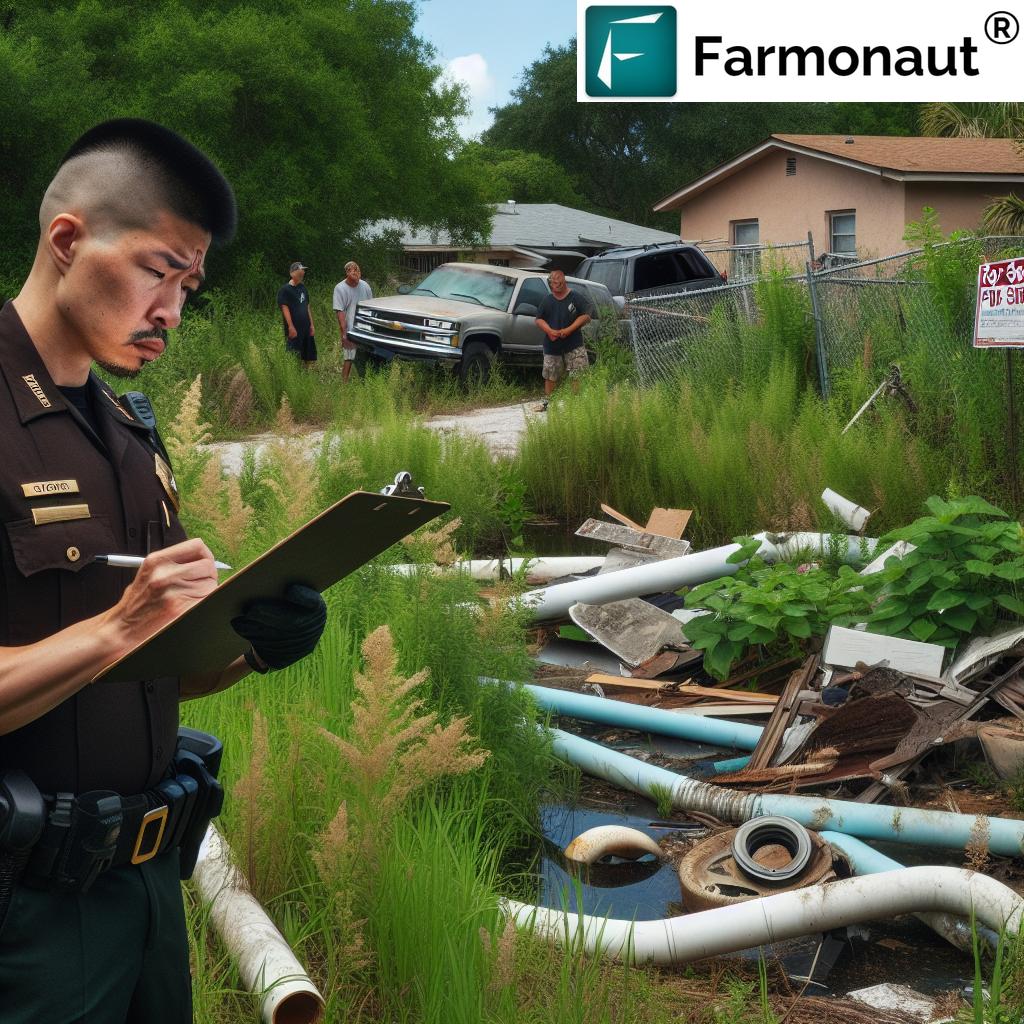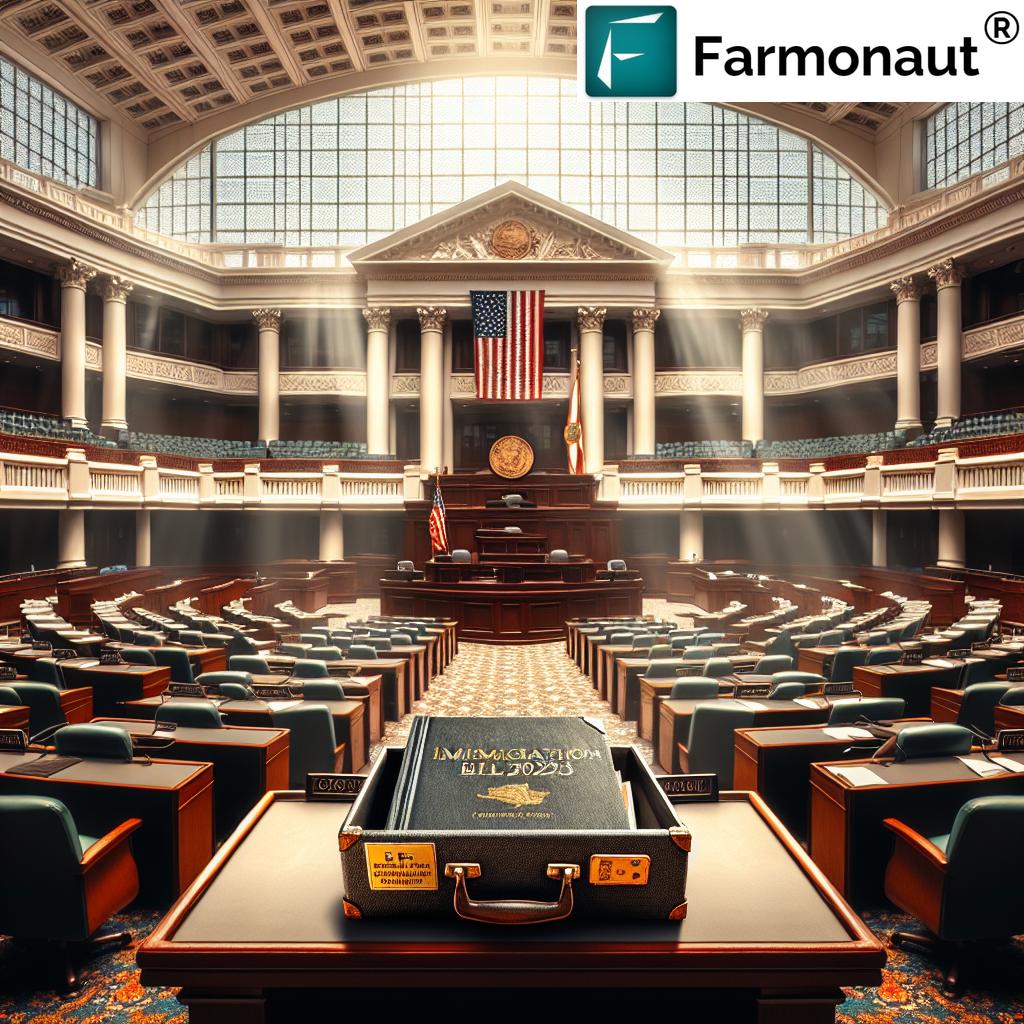Florida Property Rights vs. Community Safety: The 25-Year Battle Over Seminole County Code Violations
“A 25-year property code violation dispute in Seminole County, Florida has resulted in millions of dollars in fines.”
In the heart of Seminole County, Florida, a remarkable saga unfolds—one that pits individual liberty against community welfare, challenging the very foundations of local governance and constitutional rights. For a quarter-century, this unincorporated area has been the stage for an unprecedented showdown between a defiant property owner and county officials, a conflict that has captivated and frustrated residents in equal measure.
As we delve into this complex narrative, we’ll explore the intricate balance between personal freedom and collective responsibility, examining how this prolonged dispute has impacted property values, safety concerns, and the overall quality of life in this Florida neighborhood. Join us as we unravel the layers of this compelling story, one that resonates far beyond the borders of Seminole County, touching on universal themes of governance, civil liberties, and the social contract that binds communities together.
The Genesis of a 25-Year Standoff
Our story begins in the late 1990s when Seminole County officials first cited Alan Davis for code violations on his property. What started as a seemingly routine matter of local ordinance enforcement quickly escalated into a prolonged battle that would span decades, accumulating millions in fines and pushing the boundaries of constitutional interpretation.
Davis, now 69, has transformed his yard into what he calls a “political protest” against government overreach. Over the years, his property has become a veritable museum of discarded items—a chaotic collection that includes:
- Rusted appliances
- Junked vehicles
- Scrap metal
- PVC pipes
- Steel drums
- Various tarps and hoses
This accumulation of junk has not only been an eyesore for neighbors but has also raised significant health and safety concerns within the community.

The Constitutional Conundrum
At the heart of this dispute lies a fundamental question: To what extent does the First Amendment protect an individual’s right to use their property as a form of expression, even when it conflicts with local ordinances and community standards? Davis staunchly maintains that his junkyard is a constitutionally protected form of free speech, a physical manifestation of his protest against what he perceives as governmental overreach.
This claim has forced local officials and courts to grapple with the delicate balance between individual rights and community welfare. The case raises complex legal questions about the limits of free expression and the authority of local governments to enforce codes designed to maintain safety and property values.
The Community’s Plight
While the legal battle rages on, the impact on the local community has been profound. Neighbors like David Radosevich have found themselves caught in the crossfire, their quality of life and property values potentially affected by the ongoing situation. The community’s frustration is palpable, with many feeling that their concerns have been overshadowed by the prolonged legal dispute.
Key concerns raised by residents include:
- Potential health hazards from accumulated debris
- Safety risks, especially during severe weather events
- Negative impact on property values
- The perceived inability of local government to effectively address the issue
These concerns highlight the broader implications of the case, demonstrating how one individual’s actions can have far-reaching effects on an entire neighborhood.
The County’s Dilemma
Seminole County officials find themselves in a challenging position. On one hand, they are tasked with enforcing local ordinances and addressing the legitimate concerns of community members. On the other, they must navigate the complex legal landscape surrounding property rights and free speech protections.
The county’s efforts to resolve the situation have included:
- Issuing multiple citations and fines
- Engaging in legal proceedings against Davis
- Attempting to clean up the property at taxpayer expense
However, these efforts have been largely stymied by a combination of legal constraints and Davis’s unwavering defiance. The situation is further complicated by Florida’s robust homestead exemption laws, which protect Davis’s property from seizure, limiting the county’s ability to collect on the millions of dollars in accrued fines.
The Escalation: A Fiberglass Statement
As if to underscore his commitment to his cause, Davis has recently announced plans to erect a six-foot-tall fiberglass sculpture of human buttocks on his property. This provocative addition to his already controversial display serves as a stark reminder of the ongoing tension between individual expression and community standards.
This latest development raises questions about the limits of protest and the point at which personal expression potentially infringes on the rights of others. It also highlights the challenges faced by local governments in addressing such unconventional forms of protest within the framework of existing laws and ordinances.
Legal Ramifications and Precedents
The prolonged legal battle surrounding Davis’s property has set several precedents and raised important questions about the enforcement of local ordinances in unincorporated areas. Some key legal aspects of the case include:
- The interpretation of First Amendment protections as they apply to property use
- The limitations of local government authority in enforcing code violations
- The effectiveness of fines and legal actions in addressing long-term violations
- The role of state laws, such as Florida’s homestead exemption, in shielding individuals from certain enforcement actions
These legal considerations have implications that extend far beyond Seminole County, potentially influencing how similar cases are handled across Florida and potentially nationwide.

The Broader Implications
This case serves as a microcosm of larger debates taking place across the United States regarding the balance between individual rights and community welfare. It touches on several critical issues:
- The extent of local government authority in regulating private property
- The balance between free speech and community standards
- The effectiveness of current legal frameworks in addressing long-term code violations
- The impact of individual actions on community well-being and property values
As communities across the country grapple with similar challenges, the outcome of this case could have far-reaching implications for how local governments approach code enforcement and balance competing rights and interests.
The Human Element: Voices from the Community
Behind the legal battles and policy debates are real people whose lives have been profoundly affected by this ongoing situation. Neighbors like David Radosevich have become unwilling participants in a drama that has stretched on for a quarter-century. Their stories provide a poignant reminder of the human cost of this protracted conflict:
- Concerns about property values and the ability to sell homes in the affected area
- Frustration with the perceived lack of effective action by local authorities
- Worries about health and safety risks posed by the accumulated debris
- The emotional toll of living in a neighborhood at the center of a long-standing dispute
These personal accounts underscore the real-world impact of what might otherwise be seen as an abstract legal battle.
Looking Ahead: Potential Resolutions and Challenges
As this case enters its 26th year, the question on many minds is: How can this situation be resolved? Several potential paths forward have been suggested:
- Legislative action to strengthen local enforcement capabilities
- Mediation efforts to find a compromise between Davis and the county
- Community initiatives to address the broader issues of blight and code enforcement
- Legal challenges that could potentially escalate the case to higher courts
Each of these approaches comes with its own set of challenges and potential consequences, highlighting the complexity of finding a solution that addresses all stakeholders’ concerns.
The Role of Technology in Modern Governance
While the Seminole County case highlights challenges in traditional code enforcement, it’s worth noting how technology is reshaping other aspects of local governance and community management. For instance, in the agricultural sector, companies like Farmonaut are leveraging satellite imagery and AI to help farmers and local authorities monitor land use and crop health more effectively.
Such technological advancements could potentially offer new avenues for addressing community concerns and enforcing regulations in a more data-driven manner. While not directly applicable to the unique situation in Seminole County, these innovations demonstrate the evolving landscape of property management and community oversight.
“One Florida resident’s 25-year protest against county regulations involves accumulating junk and debris in his yard.”
Timeline of Key Events
| Year | Event | Significance |
|---|---|---|
| 1997 | Initial code violation citation | Marks the beginning of the 25-year dispute |
| 1998 | Davis’s first protest action | Establishes the pattern of defiance against county regulations |
| 2000 | Major legal challenge filed by Davis | First significant court battle over property rights |
| 2005 | Fines reach $1 million mark | Highlights the escalating financial stakes of the dispute |
| 2010 | County attempts major clean-up operation | Demonstrates the practical challenges of enforcing code violations |
| 2015 | Fines surpass $5 million | Underscores the ineffectiveness of financial penalties in this case |
| 2020 | Renewed community outcry and media attention | Brings the long-standing issue back into public focus |
| 2023 | Davis announces plans for fiberglass sculpture | Latest escalation in the ongoing protest |
The Intersection of Property Rights and Community Standards
At its core, this case exemplifies the tension between individual property rights and community standards. It raises several critical questions:
- How do we balance personal freedom with collective welfare?
- What are the limits of local government authority in regulating private property?
- How can communities effectively address issues of blight and safety concerns?
- What role should state and federal laws play in local property disputes?
These questions resonate far beyond Seminole County, touching on fundamental issues of governance and civil society. As communities across the nation grapple with similar challenges, the resolution of this case could have far-reaching implications for how we approach the delicate balance between individual rights and community standards.
The Economic Impact
The prolonged dispute has had significant economic implications for both the county and the surrounding community. Consider the following:
- The cost of ongoing legal proceedings and enforcement efforts
- Potential impact on local property values
- Resources expended on clean-up attempts
- The uncollected millions in fines
These financial considerations add another layer of complexity to the situation, raising questions about the most effective use of public resources in addressing such long-standing issues.
The Role of Media and Public Perception
Media coverage has played a significant role in shaping public perception of this case. Over the years, the story has garnered attention from local, state, and even national news outlets. This coverage has:
- Brought wider attention to the issues at stake
- Influenced public opinion on property rights and local governance
- Potentially impacted the strategies of both Davis and county officials
- Highlighted the challenges faced by communities dealing with similar issues
The media’s role in this case underscores the power of public narrative in shaping long-standing disputes and influencing policy discussions.
Explore Farmonaut’s API for agricultural insights
Lessons for Local Governance
The Seminole County case offers valuable lessons for local governments across the country. Some key takeaways include:
- The importance of clear, enforceable code regulations
- The need for flexible approaches to long-term compliance issues
- The value of community engagement in addressing complex local challenges
- The potential limitations of traditional enforcement mechanisms
These lessons could inform policy decisions and enforcement strategies in other jurisdictions facing similar challenges.
The Future of Property Rights and Local Ordinances
As we look to the future, this case raises important questions about the evolution of property rights and local governance:
- How might changing social norms impact our understanding of property rights?
- What role will technology play in code enforcement and community management?
- How can local governments adapt to address new forms of protest and expression?
- What legislative changes might be necessary to address similar situations in the future?
The resolution of the Seminole County case could set important precedents for how these questions are answered in communities across the nation.
Conclusion: A Community at a Crossroads
As the Seminole County property dispute enters its 26th year, it stands as a testament to the complex interplay between individual rights, community welfare, and the challenges of local governance. This case has become more than a simple matter of code enforcement; it has evolved into a symbolic battle over the limits of personal freedom and the power of local government.
The ongoing saga serves as a stark reminder of the delicate balance that must be struck in any community between respecting individual liberties and maintaining standards that benefit the collective good. It highlights the limitations of current legal frameworks in addressing prolonged disputes and the need for innovative approaches to community problem-solving.
As we look to the future, the resolution of this case—whenever and however it may come—will likely have far-reaching implications. It may shape how communities across Florida and beyond approach similar challenges, influencing everything from local ordinance enforcement to state-level property rights legislation.
Ultimately, the Seminole County case reminds us that at the heart of every policy debate and legal battle are real people and communities. It underscores the importance of finding solutions that respect individual rights while also preserving the safety, well-being, and quality of life for all community members.
As this story continues to unfold, it will undoubtedly provide valuable lessons for policymakers, legal experts, and community leaders grappling with the ever-evolving landscape of property rights and local governance in the 21st century.
FAQ Section
- Q: What are the main issues at stake in the Seminole County code violation dispute?
A: The main issues include individual property rights, community safety and aesthetics, the limits of local government authority, and the interpretation of First Amendment protections. - Q: How has Florida’s homestead exemption affected this case?
A: The homestead exemption has protected the property owner from having his land seized to pay the accumulated fines, limiting the county’s enforcement options. - Q: What attempts have been made to resolve the situation?
A: The county has issued citations, imposed fines, engaged in legal proceedings, and attempted to clean up the property. However, these efforts have been largely unsuccessful due to legal constraints and the property owner’s continued defiance. - Q: How has this dispute affected the local community?
A: Neighbors have expressed concerns about property values, safety risks, and the overall quality of life in the area. The situation has also caused frustration with local government effectiveness. - Q: What potential solutions have been proposed for this long-standing issue?
A: Proposed solutions include legislative action to strengthen local enforcement capabilities, mediation efforts, community initiatives, and potential legal challenges in higher courts.
Learn more about earning with Farmonaut




















